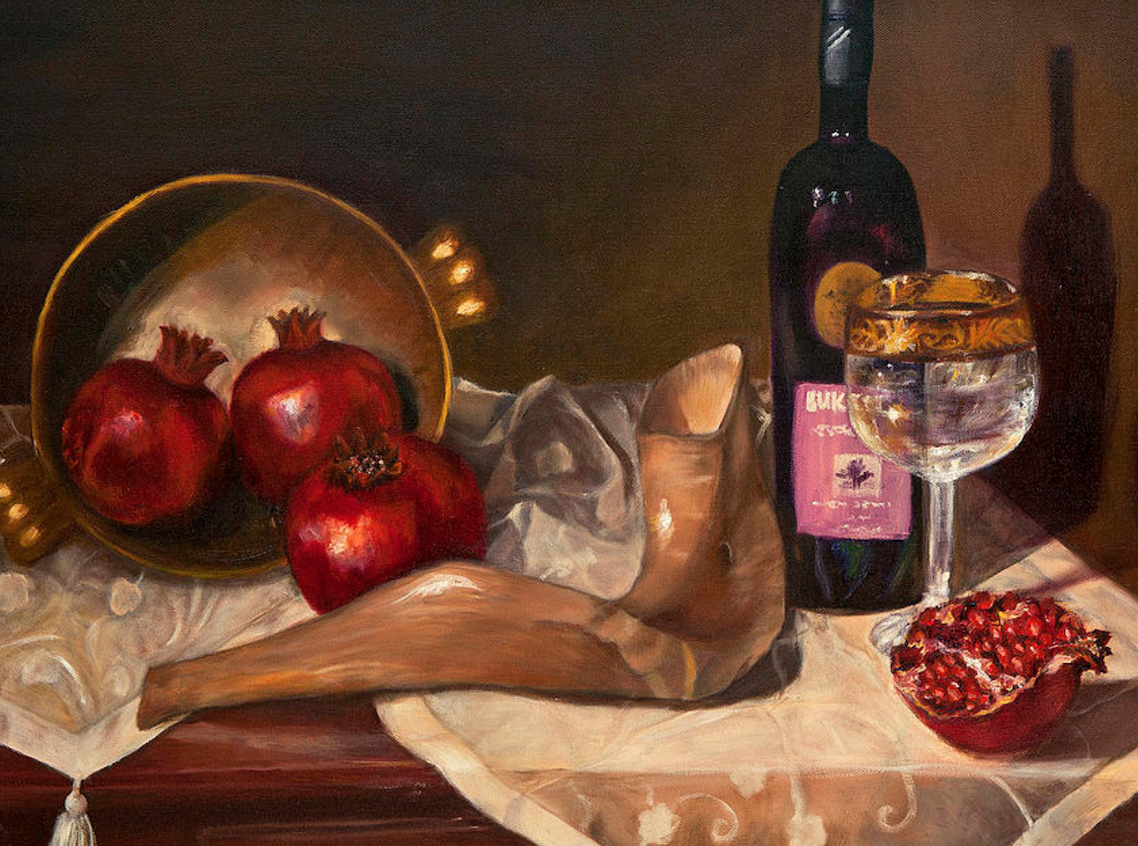Carillon Notes – September 2021
Wednesday, September, 8th, 2021 Carillon Tune

Carillon Notes for September 2021
Jewish High Holidays Melody
Tune name: Yamim Noraim Ma’ariv Bar’chu (Call to Worship for the Evening of the Days of Awe)
This year, Rosh Hashana, the holiday that celebrates the new year in the Jewish calendar, from 5781 to 5782, falls during the first week of September. Since a day in the Jewish tradition begins at sunset, the holiday begins on Sunday, September 6 at sunset and ends at sunset on either Monday, September 7th or Tuesday, September 8th, depending on your tradition. In the old days, Rosh Hashahah was celebrated for two days so that at some point all Jewish people the world over would be celebrating together regardless of the exact time or date; some people still do this and some only mark the first day in temple. In any case, this month we will be hearing a melody that is used in the Ashkenazic (France, Germany and Eastern European Jewish) tradition for a number of prayers during the liturgy for Rosh Hashana (literally “Beginning of the year”). This holiday and the day ten days later called Yom Kippur (the “Day of Atonement”) are known collectively as the Yamim Noraim, or “Days of Awe” and are among the most important observances in the Jewish year. In English, they are also called the High Holidays or High Holy Days.
This melody is not designated for one particular prayer, but for many during the liturgy. In Catholic worship during the Renaissance, it was not at all uncommon for composers to write Mass settings where each movement begins with the same tune. Sometimes these tunes were sacred and sometimes they were very secular, which was a way of being not-so-quietly subversive in those days. The tune was often varied by putting the tune in a different voice, speeding it up or slowing it down or even inverting it, but the same tune was still present. The first prayer that it would likely be used for is the “Bar’chu” which is the call to worship, and proclaims “Bar’chu et Adonai ham’vorach l’olam vaed” which is translated in the Union Prayer Book as “Praised be God, to whom all praise is due, for ever and ever.” The same prayer is said, with others, before somebody reads a passage from the Torah.
This melody, along with about fifty others, has been designated a “Mi-Sinai” melody. This means literally that it was handed down to Moses on Mount Sinai, like the Ten Commandments. The thought is that these melodies are so traditional that nobody can remember ever doing them differently and that they should be treated with the same respect as if they had been handed down on Mount Sinai, which is to say that they should not be altered. The biggest problem is that if they aren’t written down, they will be altered as a matter of course as they are passed down through the generations, and in my own work with cantors and rabbis at various temples, I have heard debates and arguments about how a melody should be sung, often with nothing more than “this is how I’ve always done it” as evidence.
The notable exception to the lack of notated Jewish music is the late Renaissance composer Salamone Rossi, who published a collection of Jewish liturgical choral music in 1623. His style is much like his contemporaries, including Monteverdi, but the text is in Hebrew instead of Latin. He also published secular songs and madrigals, and four volumes of instrumental music of various types.
In the 19th century, particularly in Germany, more “classical” arrangements of Jewish melodies flourished. One of the greatest composers of these settings was Louis Lewandowski (1821-1894) who was known to Felix Mendelssohn and is roughly contemporary to Brahms. He wrote a large body of liturgical music for cantor, choir, and organ which is harmonically and structurally similar to the Christian music of the same period, but the melodies are the traditional cantorial ones.
It wasn’t until the early 20th century that any kind of systematic musicological study was done of Jewish music. Abraham Zevi Idelsohn’s “Jewish Music in Its Historical Development” seems to be the first book of its kind, and while somewhat problematic in its methodology, it is nevertheless an important work. He claims to trace the opening of this High Holiday melody to a book written by Paul the Deacon, an 8th century historian and associate of Charlemagne. Quoting Lawrence Szenes-Strauss: “The sources I found on this are certain that the Church got the melody from the Jews and not the other way around, but nobody shows their work and it’s hard to imagine how one could know such a thing.”
Special thanks to my colleague, friend, and classmate Cantor Lawrence Szenes-Strauss (BA Brandeis University 2003, MSM Jewish Theological Seminary 2009) for contributing to my research for this longer than usual article.
L’Shana Tova! (Happy New Year!)
— Thomas Dawkins, music director and organist
Further listening and viewing:
http://youtu.be/Vlga1-z0Ypk Congregation Kol Ami, Los Angeles, directed by Jeremy Gimbel and Lorry Black, singing Louis Lewandowski’s arrangement of the Bar’chu during Rosh Hashana worship.
http://youtu.be/32cbo98oX9k Organist Thomas Dawkins plays the first of the Five Festival Preludes by Louis Lewandowski, which treats this melody as a fugue subject in the Romantic style.
http://youtu.be/NNbbqVbMKsk Member of the Zamir Chorale of Boston, conducted by Joshua Jacobson singing Salamone Rossi’s 5-part setting of Psalm 128.